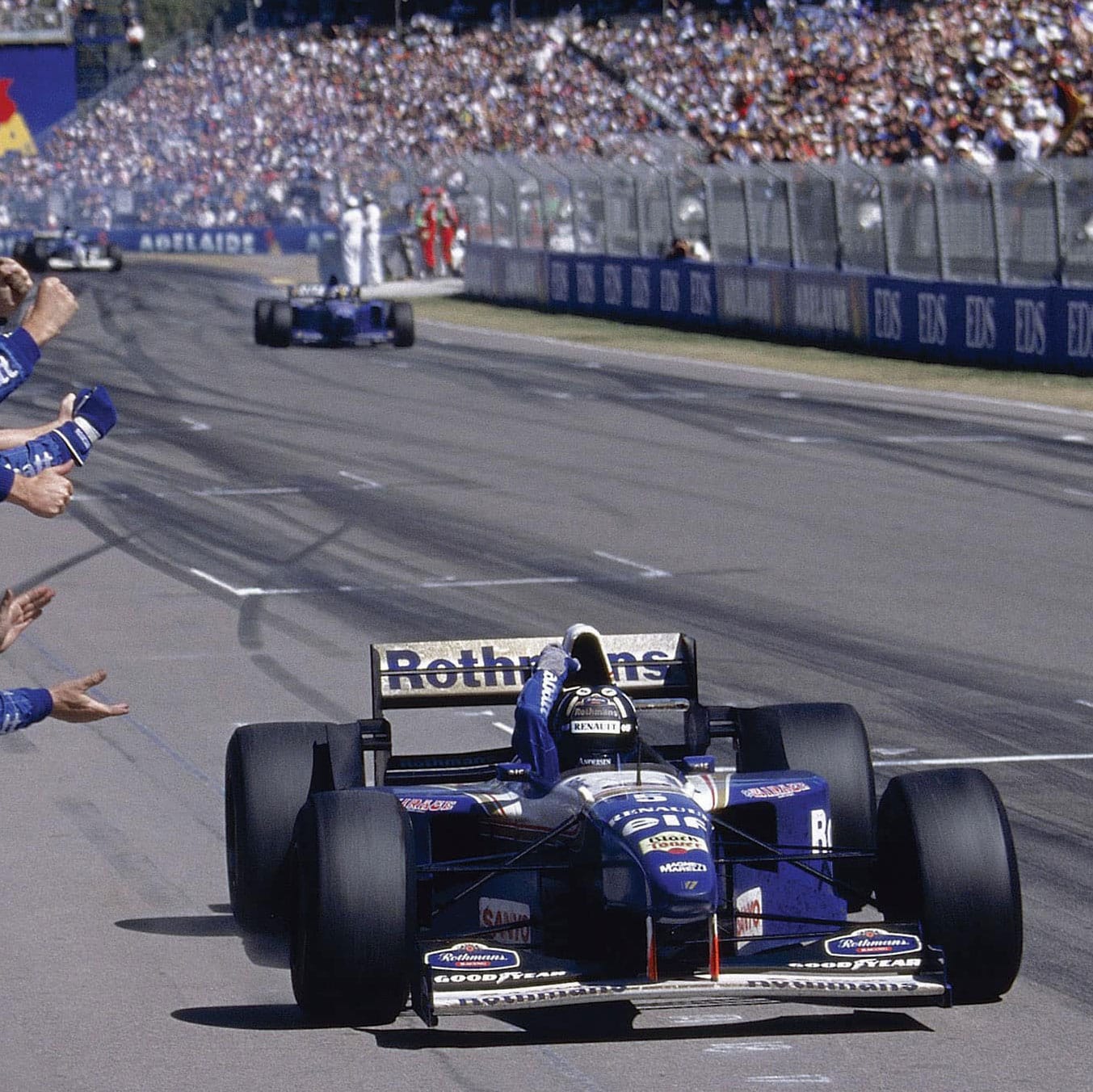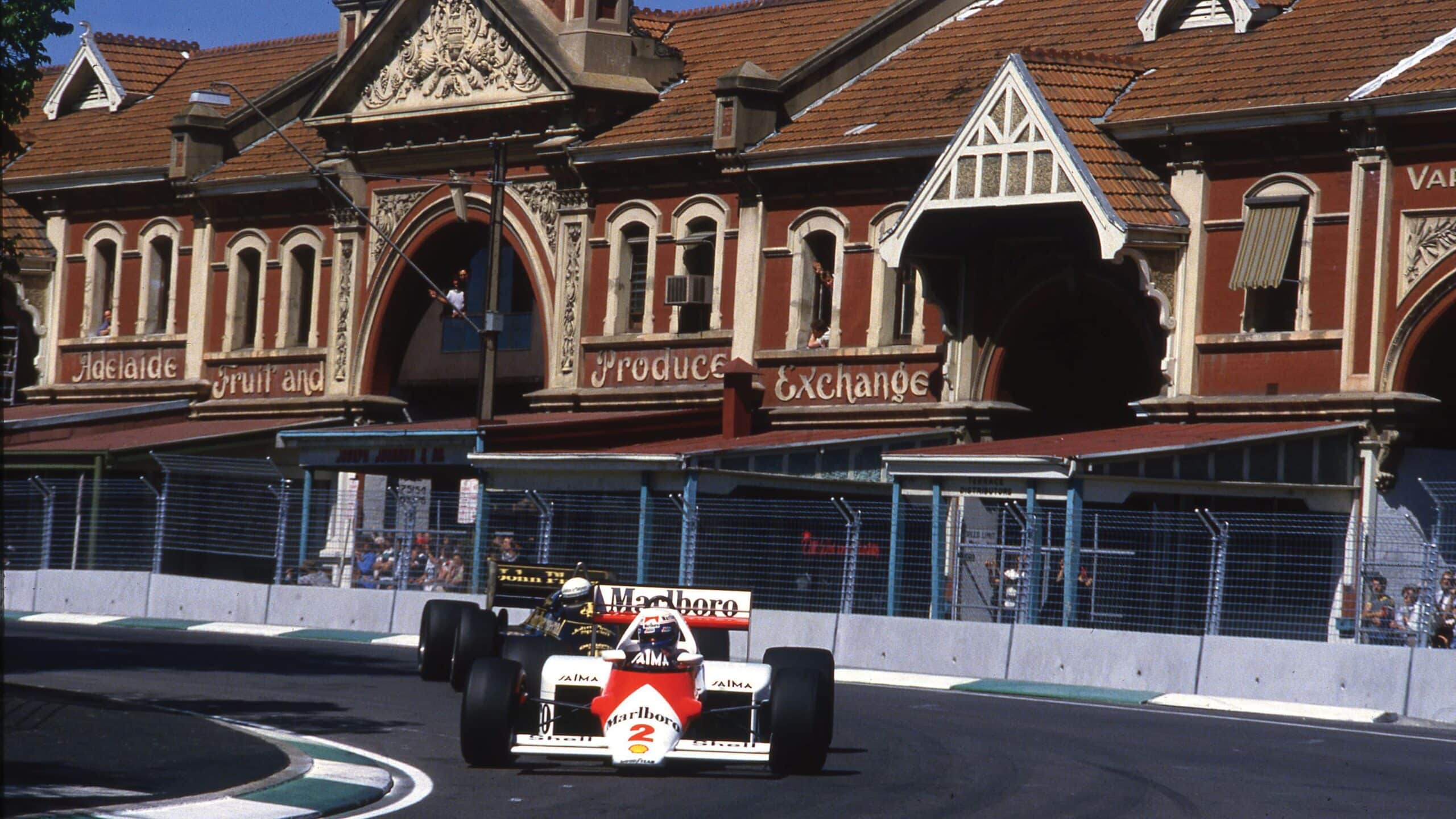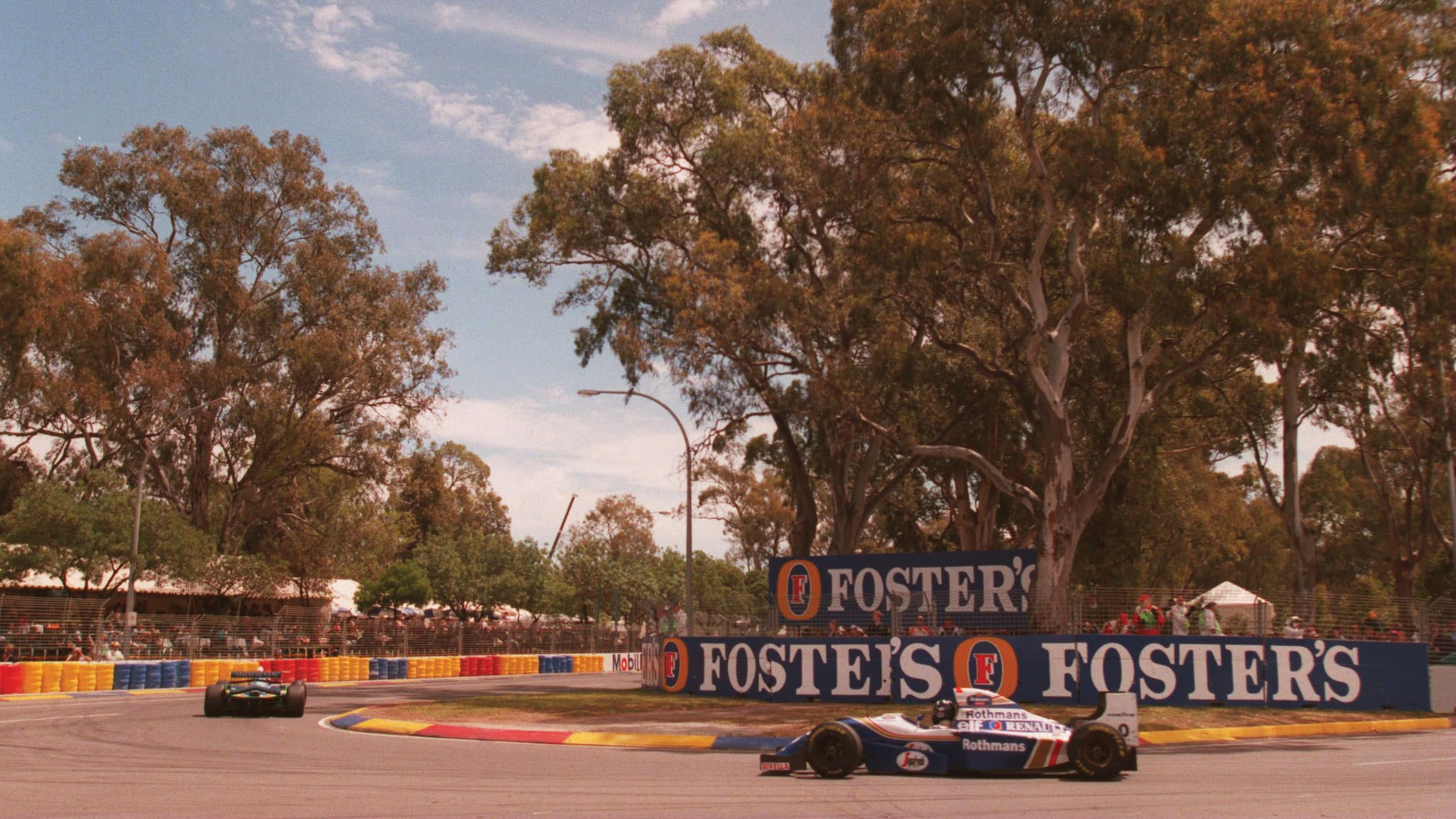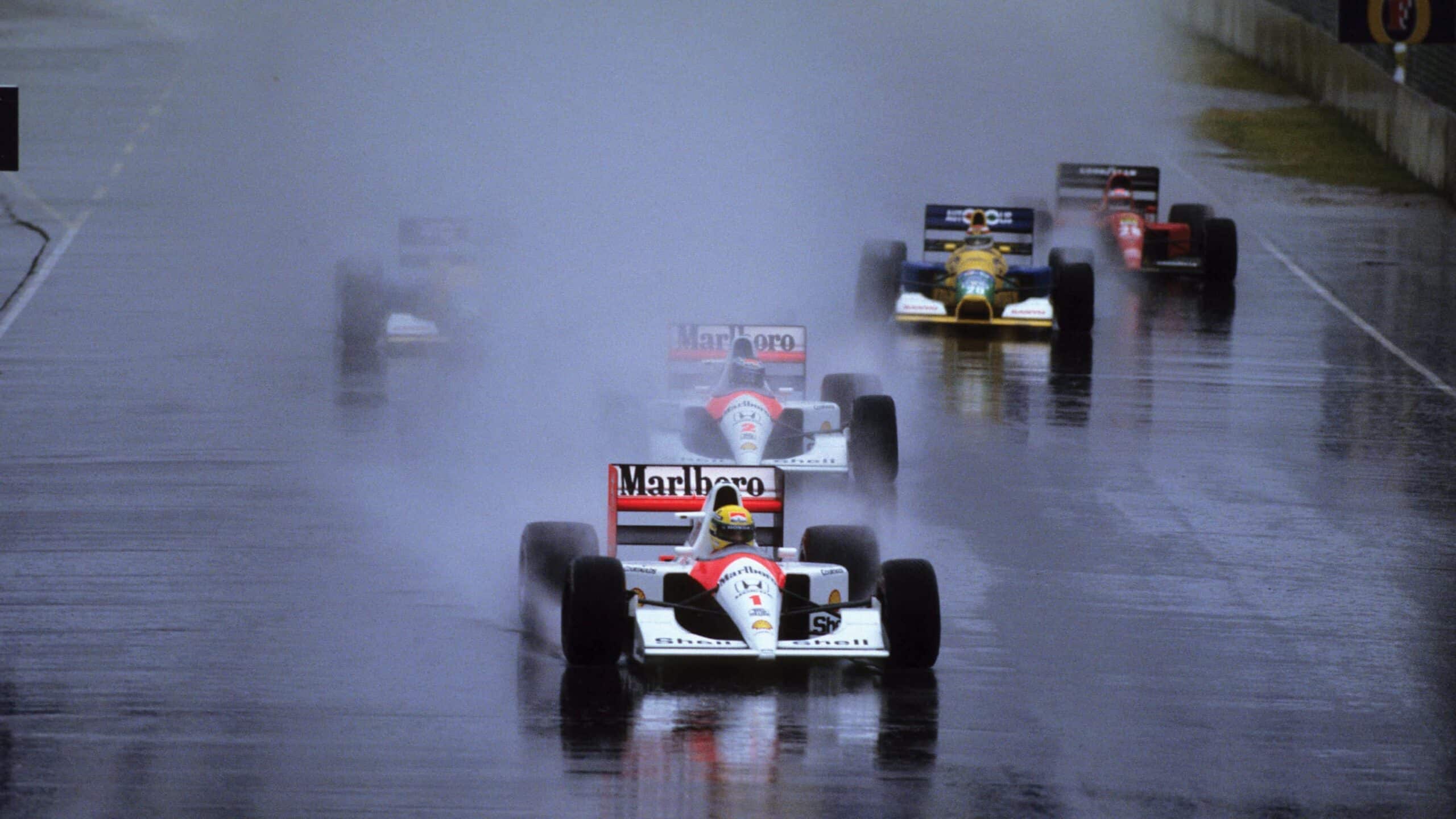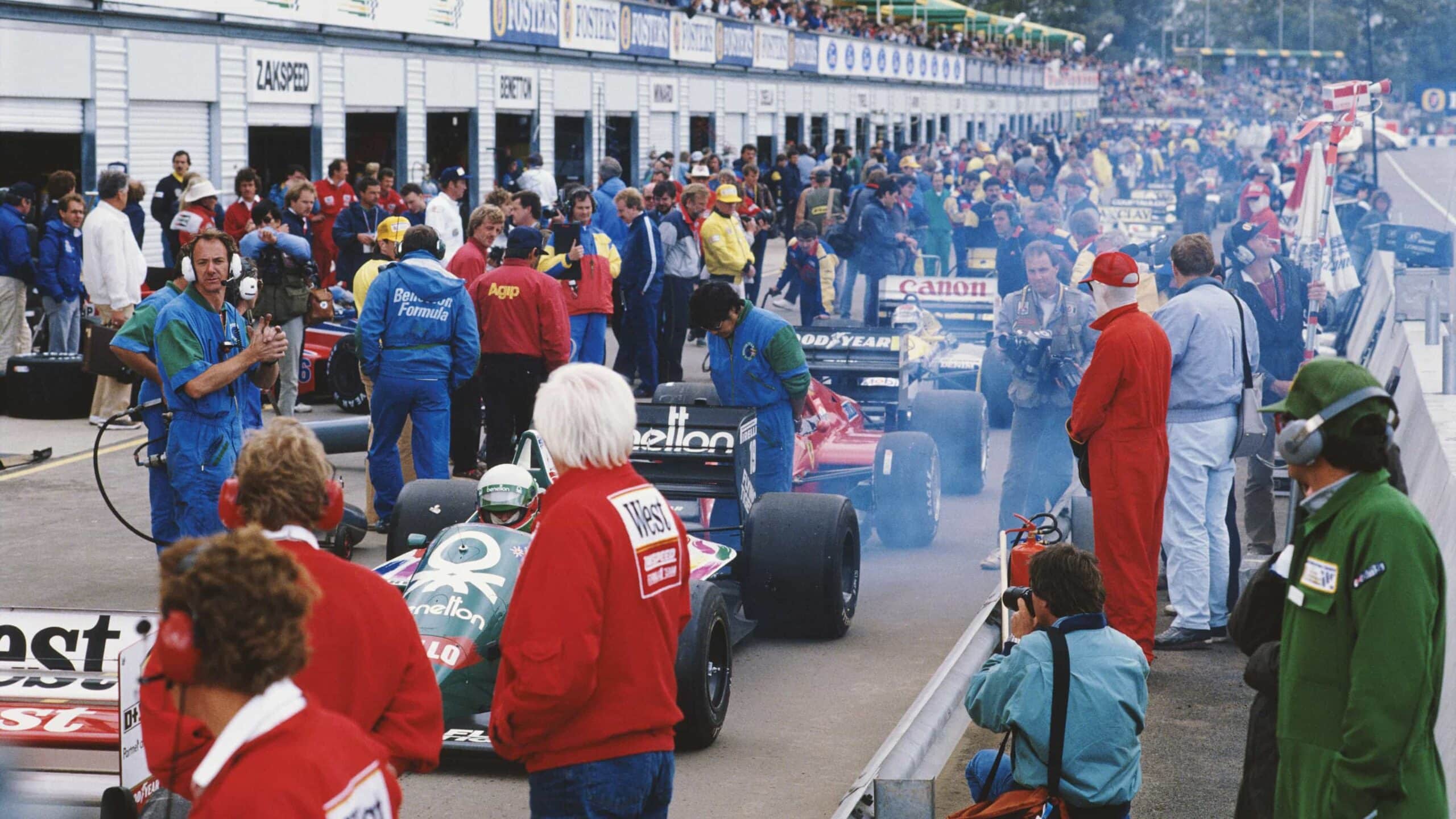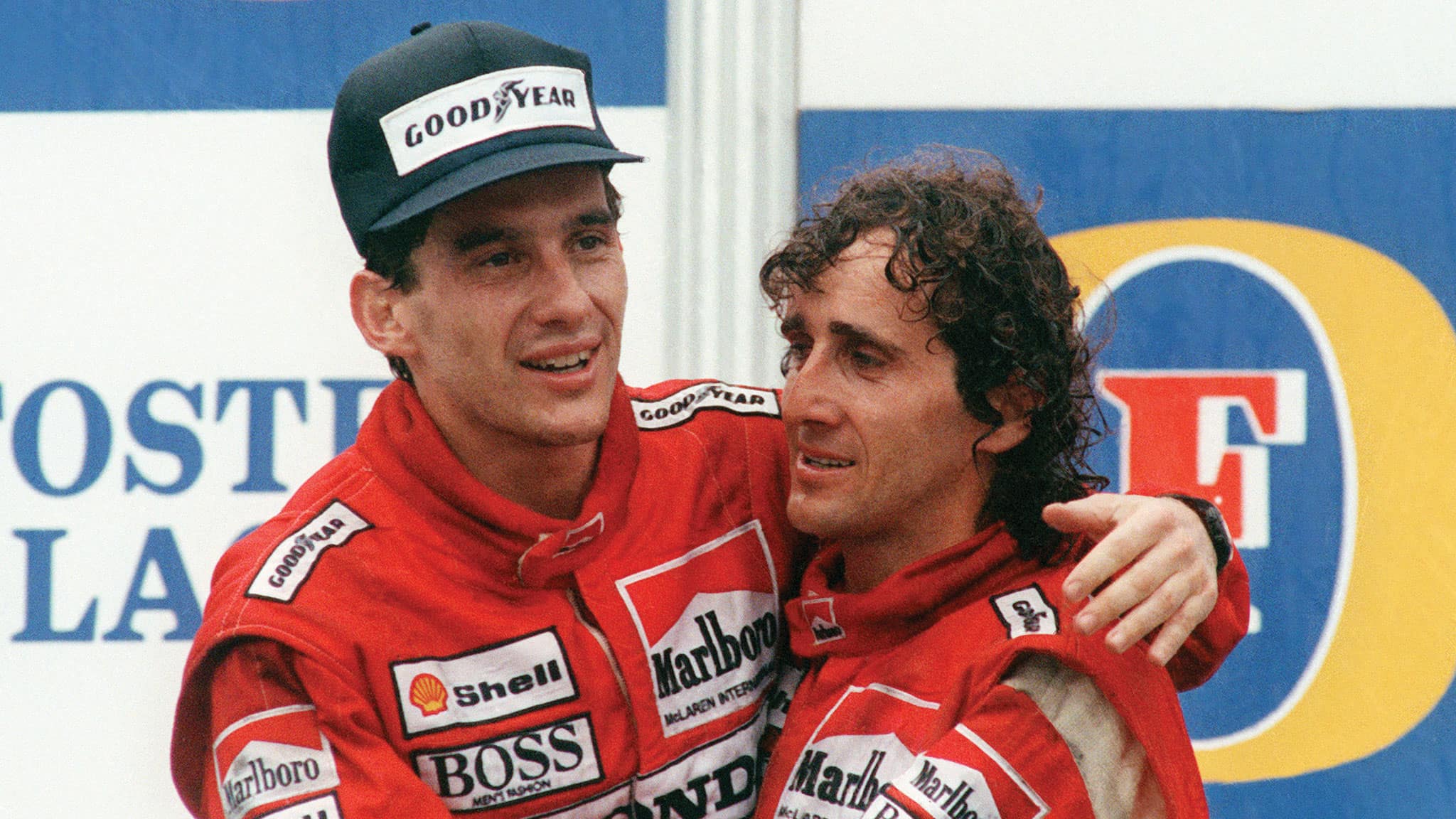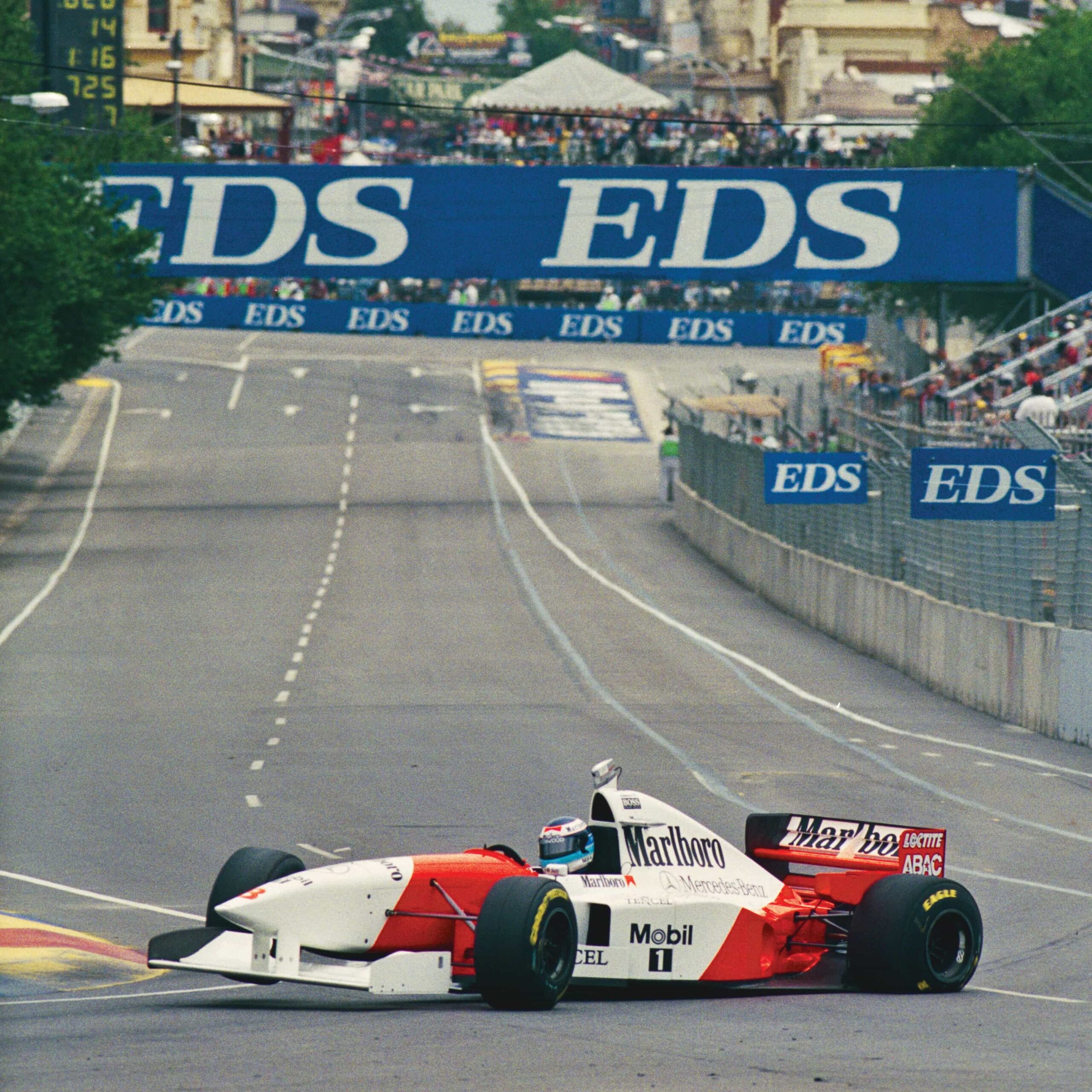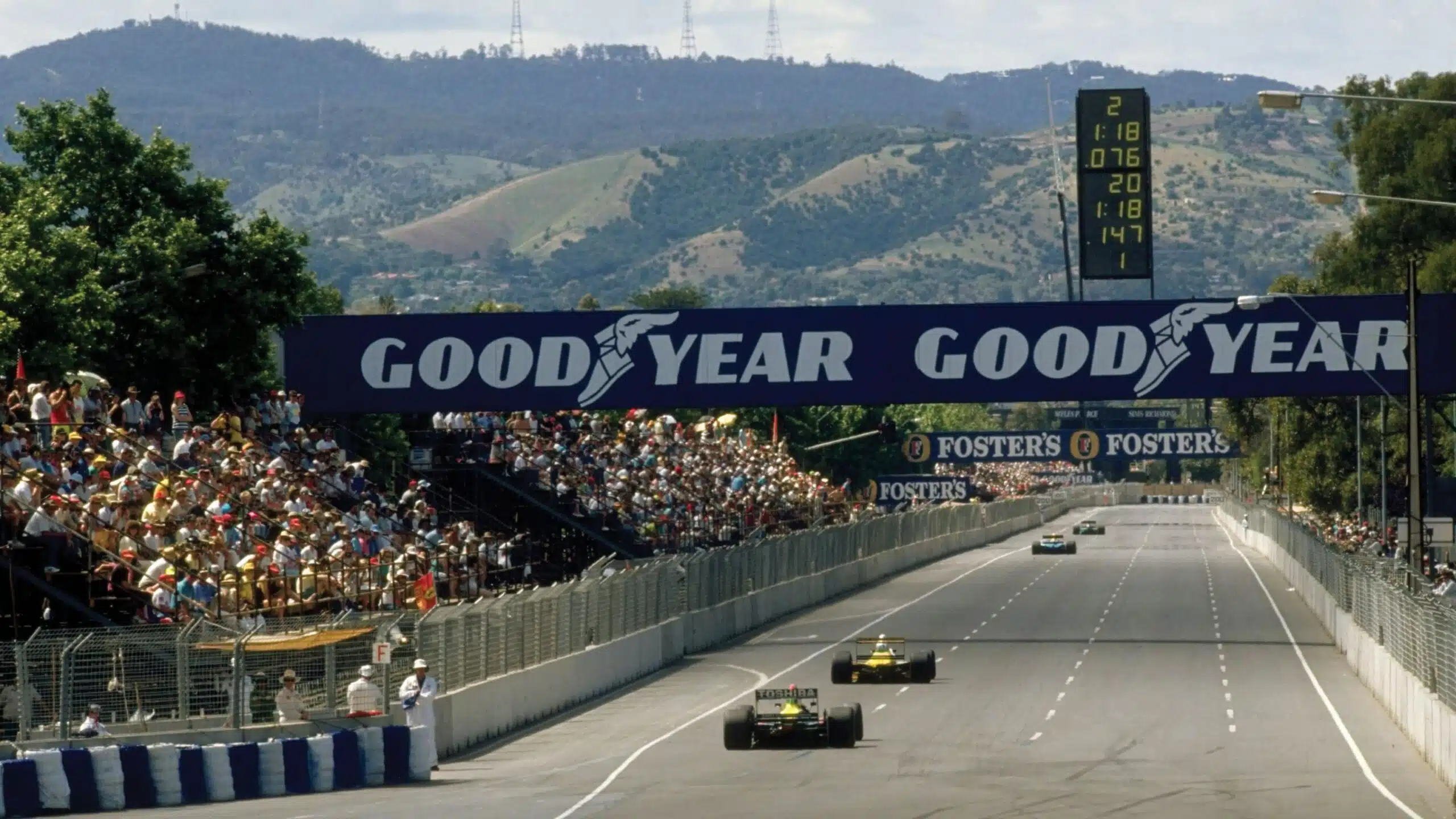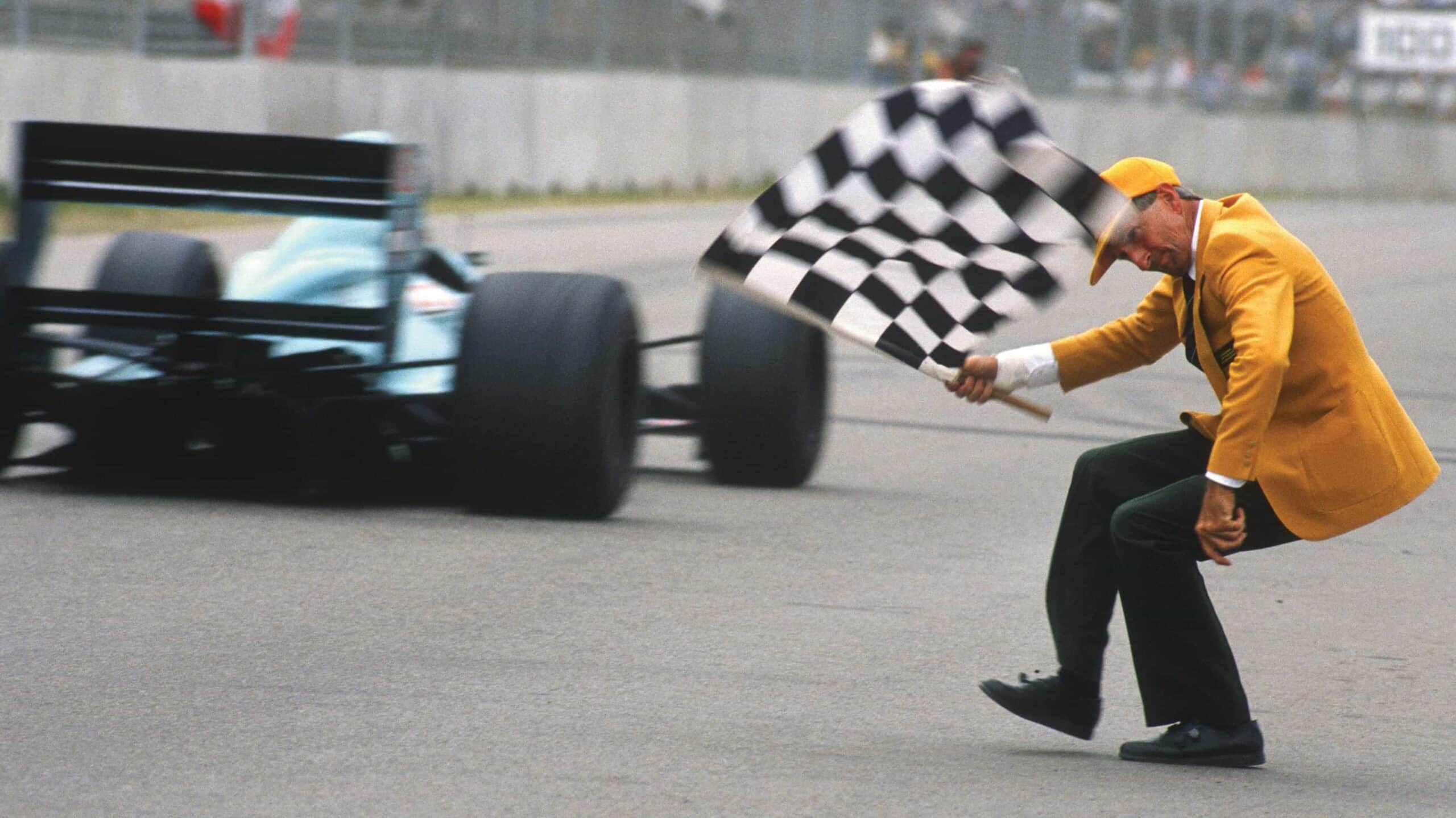Adelaide: Australia’s 200mph streets circuit that witnessed incredible F1 moments
It’s 40 years since Adelaide first appeared on the Formula 1 calendar. Andrew Coles recalls the audacious bargaining and track drama that attracted the world’s attention
DPPI
It’s a hot Thursday in late 1985, and the sleepy city of Adelaide is about to be changed forever. Nineteen eighty world champion Alan Jones, only the second Australian to win a Formula 1 driver’s title, is given the honour of completing the very first F1 lap of the brand-new Adelaide Street Circuit in his Lola-Hart THL1.
Some 40 years later, on the eve of the 2025 F1 season opener in Melbourne, stars of the Adelaide era will gather 500 miles away at the annual Adelaide Motorsport Festival to celebrate one of the great street circuits.
This year’s festival will see Jones reunited with that very same Lola-Hart, and he’ll be joined by past winners Damon Hill, Thierry Boutsen, Stefan Johansson and David Brabham – the only other Australian to race in Adelaide. They’ll drive Adelaide-era cars in non-competitive demo sessions, joined by adopted Aussie Valtteri Bottas, Sky Sports’ David Croft, crowd favourite Guenther Steiner, and a suite of local names. Adelaide-era Group A touring cars, V8 Supercars, Can-Am Shadows, Group C endurance racers and modern Hypercars complete a packed two-day programme.
One regular at the festival, 1983 Le Mans winner and proud South Australian Vern Schuppan, knows the story of how the city won over a reluctant Bernie Ecclestone better than most.
“After I won Le Mans, the South Australian premier John Bannon put on a business lunch in my honour,” Schuppan recalls. “During the lunch he announced that Adelaide would host a grand prix, and nobody had heard that said by anybody before. I was shocked as well!”
Adelaide was on a warpath to shake its reputation as a geographical and cultural backwater. Don Dunstan’s Labour government championed sweeping social reforms in the 1970s, and by the time Bannon led the party to victory in 1982, his mandate was economic. The state’s first international airport and five-star hotel were swiftly opened, and Bannon wanted a major event to raise the city’s profile. A grand prix was just the thing.
Schuppan, who knew Bernie Ecclestone well, was consulted: “I said that Bernie gets phone calls with offers to roll out the red carpet all the time, and it wouldn’t impress him as he’s heard it all before from so many other places, where it usually ends up going into the ‘too hard’ basket.”
Australia had held some 49 non-championship grands prix since 1928, and they’d often been contested by the biggest European stars as part of an off-season tour Down Under. Melbourne’s Bob Jane, an accomplished national hero himself, had been successfully hosting grands prix at his Calder Park circuit and was angling for championship inclusion, but Ecclestone was set on a street race past Sydney’s Opera House. He’d not so much as heard of Adelaide, at first thinking it might be an outer suburb of Sydney.
Schuppan promised to speak to Ecclestone but faced an uphill battle. “You must be the only person in Australia who doesn’t know I’m not interested in holding a race anywhere but Sydney,” was Ecclestone’s swift response.
Displaying his rural-born tenacity, Schuppan persisted. “I said to Bernie, ‘You love street races, and everything is right to run a street race in Adelaide. The city council and the government are behind it, the money is all there, the track will go past gumtrees and old colonial houses so television viewers will know it’s Australia, all the things you want.’ At the end of the conversation, he agreed to take another look at it, and it all went from there.”
In October 1984 Bannon and a small entourage flew to meet Ecclestone in London with the goal of securing rights to host a one-off race in ’86. He and Ecclestone immediately hit it off, and did a deal over a handshake in a Kensington pub. It was for three years with the option of another four, but Ecclestone insisted the first race would be the 1985 season finale. Bannon and his team had less than a year to design and build a circuit from scratch and get Australia’s first world championship grand prix off the ground.
“Senna unexpectedly joined a shocked Tina Turner on stage during the post-race concert”
A 2.35-mile circuit was plotted linking the wide boulevards running through the city’s eastern parklands, with a dedicated loop constructed inside the Victoria Park Racecourse housing a pitlane and paddock. Protected gumtrees, some over 40in wide, could not be felled, so a now-iconic chicane was incorporated to dodge them. The circuit blended the facilities of a permanent venue with the soul of a street circuit, kissing the eastern edge of the city’s downtown restaurant district, turning the balconies of historic pubs into would-be grandstands. Unlike the slow and featureless street circuits the series had previously visited, this one was wide and fast, with the 980yd Brabham Straight enabling cars to travel at speeds in excess of 200mph. It was an instant hit.
Off track, Adelaide’s first grand prix was a true cultural watershed. Restaurants and bars were full of exotic-looking people speaking foreign languages, and The Advertiser broadsheet went as far as to warn of the spread of sexually transmitted infections caused by “an influx of prostitutes arriving for the race”.
Office workers in skyscrapers still recount the shock of audibly hearing the first practice session begin from their desks, and windows of local houses were blown out by the boom from an RAAF Hornet fighter jet making a low pass over the main straight. Juan Manuel Fangio drove a W196 Mercedes in the Friday morning Climb to the Eagle parade, which ran on public roads from the circuit into the nearby hills.
On Sunday, November 3, in roasting heat, the local flag marshal Glen Dix became a global superstar as he exuberantly flagged home Keke Rosberg as the inaugural winner, the Finn’s final F1 victory. Despite being pulled together in under a year, that first event was awarded the prestigious Race Promoters’ Trophy for best race.
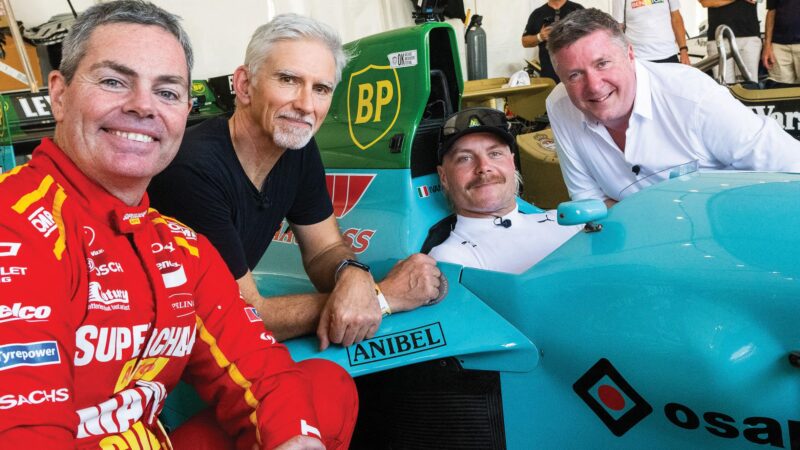
From left: Craig Lowndes, Hill, Valtteri Bottas and David Croft, 2024 Adelaide Motorsport Festival
Over the next decade Adelaide would bear witness to some of the most incredible motor sport moments of the era. The 1986 race saw Nigel Mansell’s rear tyre blow spectacularly at more than 200mph, handing Alain Prost the title, and Gerhard Berger’s commanding 1987 win for Ferrari would be the final before Enzo’s passing. The soaked 1989 race played out the controversial Prost/Ayrton Senna rivalry, and the 1990 encounter was the 500th world championship grand prix. The 1993 race was Senna’s final victory, and he unexpectedly joined a visibly shocked Tina Turner on stage during the post-race concert, prompting her to sing her hit Simply the Best for a second time that night. Nineteen ninety-four saw the still-controversial clash between title contenders Damon Hill and Michael Schumacher, which secured the latter his first world championship.
It felt like Adelaide could do no wrong, but storm clouds loomed. The visionary Bannon resigned in 1992 amid a financial scandal and with Ecclestone’s close friend no longer at the helm and the coffers running dry, Melbourne sensed an opportunity and secured the race for their Albert Park circuit from 1996. The loss still stings South Australians to this day.
But for the 1995 finale, Adelaide was determined to go out with a bang. A crowd of 210,000 people jostled for a view on race day, a single day figure only outclassed by the first US Grand Prix at Indianapolis. The 520,000 weekend attendance record still stands –Adelaide 1995 is recognised as the largest grand prix ever held.
F1 hasn’t returned to Adelaide but its street circuit does not lay silently forgotten like so many do. The full circuit was last used on New Year’s Eve 2000 for the one-off American Le Mans Series’ Race of a Thousand Years, but it would be the Holden vs Ford touring car battles that would recapture the magic on a shortened track. The inaugural Adelaide 500 in 1999 kicked off a wildly successful second chapter that continues today.
A stroll around Adelaide, now a revered tourist destination and celebrated gastronomic hotspot famous for its wines, still reveals hints of its F1 history which are worn like badges of honour. And at the Adelaide Motorsport Festival, 40 years since Alan Jones’s first lap, tens of thousands of fans still celebrate the moment when their humble city briefly became the centre of the world.
1995 Australian GP
The final moments of the last ever Formula 1 race to be hosted at Adelaide – victory for Damon Hill by two clear laps in front of 210,000 spectators. For 1996, the Australian GP would switch to Melbourne’s Albert Park
1985 Australian GP
Alain Prost powers by Adelaide’s Fruit and Produce Exchange in the searing 35°C heat of F1’s finale of ’85, followed by Elio de Angelis. Drivers loved the circuit for its wide and fast sections
1994 Australian GP
One of the distinguishing features of Adelaide was its backdrop of gumtrees, which provided some local colour when Hill went in chase of title rival Michael Schumacher at another season-ending round. The two would collide… advantage Schuey
1991 Australian GP
Proof that it rains occasionally in South Australia – Adelaide is the driest of Australia’s state capitals – came in 1991. In fact, the race was affected by a torrential downpour meaning just 16 of 81 laps could be completed. Senna, leading, was handed victory
1986 Australian GP
You could sense the excitement in the paddock in the last race of ’86. Three drivers were in contention to take the F1 title: Williams team-mates Nigel Mansell and Nelson Piquet, and McLaren’s Prost. A bumper 150,000 crowd arrived to witness proceedings
1988 Australian GP
In a season dominated by the McLaren dream team of Senna and Prost, the Adelaide climax would provide another Woking 1-2 – totalling 10 1-2 finishes from 16 outings. Prost won the race but Senna was F1’s crowned king
1995 Australian GP
Any discussion of Mika Häkkinen’s decade-long F1 career will have to mention Adelaide in ’95. In qualifying on Friday his McLaren suffered a left rear puncture at Brewery Corner. Häkkinen lost control of his car, which hit a barrier at 120mph, resulting in a fractured skull for the driver
1990 Australian GP
Adelaide had the honour of hosting the 500th F1 World Championship race, although Senna’s second title had already been decided in the previous controversial round at Suzuka, in which the Brazilian appeared to take out rival Prost at Turn 1
1988 Australian GP
Glen Dix waved the chequered flag at all F1 rounds at Adelaide – and was renowned for his flamboyant style, as can be seen in ’88 as the Leyton House of Ivan Capelli streaks by to finish sixth. It was Capelli’s finest season, with 17 world championship points
